#the redshift blues
Text
2023 Year End List - #5
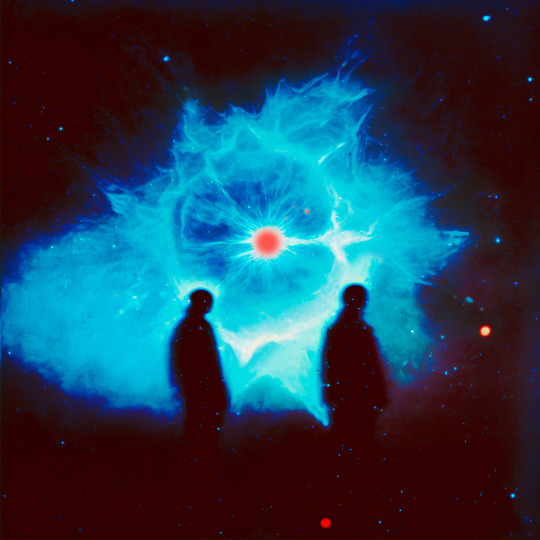
The Redshift Blues - Dispirited Spirits
Main genres: Art Rock, Progressive Rock, Midwest Emo
A decent sampling of: Space Rock, Post-Rock, Jazz Rock, Math Rock, Experimental Rock
Midwest Emo, and probably just Emo in general, really ain't usually my thing.
There's definitely some good and some great in nearly every scene, but I find this one in general to be saturated with overly indulgent projects that don't add up in the quality factor, and bands that just come off as harsh and grating. There's also a prominent few artists in this scene that give off the kind of Nice Guy™ energy that makes my skin crawl.
So if I'm completely being honest, I really just came across this record by chance, and decided to check it out almost purely because of the spectacularly awesome cover art and the equally awesome record title. To quote anime youtuber Hazel, that shit owns.
Dispirited Spirits is the moniker of Portuguese singer/songwriter/producer Indigo Dias, who was just 19 fricking years old when he made this record, and just typing that sentence out makes my head wanna explode. HOW??? HOOOOOOW???!?!?!?
What's even more, this is frigging fantastic by my own standards, and I'm not even someone who regularly enjoys a whole lot of Emo music. If there's any young newcomer who's gonna take the world of indie rock by storm, then it's gotta be this guy, right? If I was a betting man, I'd be putting my money on Dispirited Spirits.
Case in point, his latest project.
That is to say, The Redshift Blues is a stunning record that captures the awe and the angst of being that diminutive human being, bearing witness to the grandeur of the night sky which acts as the gateway to the unfathomably vast realm outside of our tiny little blue planet. Who needs expensive VR headsets to simulate floating freely through the endless sea of the cosmos, when you can just listen to this record, close your eyes, and get just about as close to the real deal as you're ever gonna have in your lifetime?
This album does a little bit of everything on the nerdier side of modern rock music - mostly a midwest emo/art rock/prog hybrid, with moments of post-rock, jazz-rock, and math rock all thrown in the mix. At the same time, this very much reinvents and kinda defies genre, clearly aiming to be its own singular thing.
Dias takes his lyrical inspiration from various astronomical phenomena on this record, the title itself being clever wordplay for the death of a relationship that invokes the universe's redshift or tendency towards expansion, causing objects to become more distant from each other over time. Some may find this dorky or try-hard or whatever, but I think the execution is mostly brilliant.
Anyhow, let's cut to the chase and hone in on my favourite tracks.
"Nine Clouds" swims through skies of glittering space dust, with gently gliding guitars that resonate in endless ripples through space and time. This track is impeccably cushiony; disorienting in the sense that it's as if I'm turning in random circles as the musical notes twist, soar, and plummet, but all the while I remain perfectly cradled in a bubble of warm nurturing light.
"Bring Down The Sky" is a journey through cosmological purgatory and back, with various trials of harsh emo power chords separated by periods of rest nestled between mellow psychedelic phaser pedals and flourishing harps. Also, kudos to whoever laid down the many different drum patterns on this track - really holds the whole thing together to give it some solid form and muscle.
"Methanol Fire" interpolates a samba-jazz beat into its hard-rocking midwest emo riffs, making it the grooviest and most rhythmic track on an otherwise sometimes very free-form record. Leisurely space jazz atmosphere interchanged with sad boys moshing in the nucleus of a supernova. These two major components blend together so seamlessly in a way I probably wouldn't have otherwise thought was possible.
The titular outro "The Redshift Blues" is hands down the real showstopper here, as well as the emotional lynchpin of the record. This ten minute opus is one part looming space ambience, one part post-rock epic poem, yet another part part solitary acoustic ballad, and one part cinematic orchestral elegy. The moment of that final line of the bridge where Dias utters "I'll find you in the stars" and everything comes forth in this really mind-blowing, unearthly harmonious sound swell - that moment just really gets to me. A simple instance of pure, raw, ephemeral beauty in the midst of a very chaotic composition.
There are a few sparring moments here or there where it meanders or overly indulges itself - mostly on "Saturnine Saturn Dreams" - But overall I'm mostly impressed at how much of this manages to come together in a way that comes off very natural. There's a lot of tight composition that's working over-time to make sure that this maintains its nearly amorphous structure.
So yeah, let me reiterate that I am mostly just mind-blown by this project. Dispirited Spirits is easily one of the most ambitious and unique artists in indie rock to have come onto the scene so far in this new-(ish) decade. The powerful cohesion of this project suggests that it came from an visionary who's far more seasoned than Indigo Dias would reasonably be at his young age.
The Redshift Blues brilliantly conveys the existential dread and angst that arises from existing in a world far larger than you could ever imagine, and how that impacts your ability to ever be fully in control of your life when there are so many external factors involved that are so much larger than you. Ultimately, it's a surrendering of the self to the inevitable impotence of being just one person, yet still the artist manages to find a shimmer of hope and humility in what is truly sublime about this world. That, I think, is the true Redshift Blues.
9/10
Highlights: "The Redshift Blues", "Nine Clouds", "Bring Down The Sky", "Methanol Fire"
#album review#music review#list#aoty#year end list#indie rock#2023#aoty2023#indigo dias#dispirited spirits#the redshift blues#midwest emo#art rock#progressive rock
0 notes
Text

Loop-A-Lot_#001
#001#loop#loopalot#c4d#mograph#redshift#wip#signal#gsg#motiondesign#meditation#practice#blue#cube#infinite#studio#vfx#3d#cgi#3dart#nft#reflections#creative#art#digitalart#animation#maxon#cinema4d#aftereffects
3 notes
·
View notes
Text
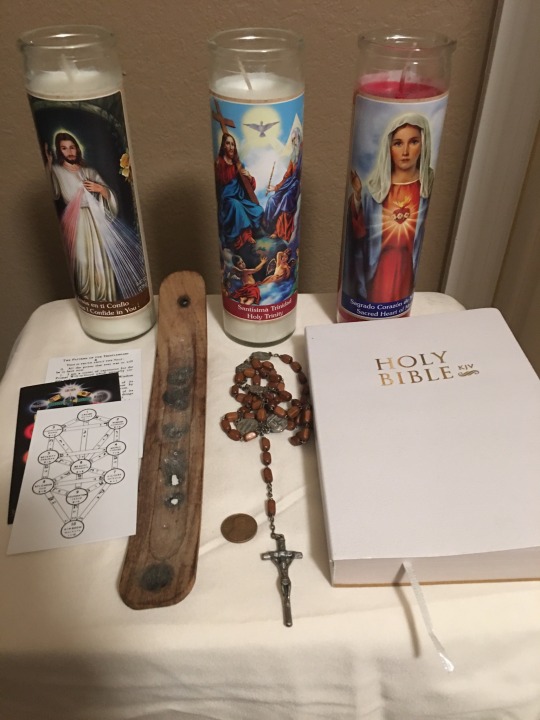
I set up an Altar to the Honor the Holy Christos: The first of Ascended Masters, the first True Natural Mystic : the Buddha that Regenerates Throughout Time, and The Venerable Krishna in The Hindu Philosophies. Along with Him are the 2 Forms of divine-feminine energy: the threefold form of Holy Virgin Mother Goddess Isis -Virgin Mary-Theotokos Venus and the Wife of The Christos #marymagdalene and #radharani in the Hindu Faiths on the Right. In the Middle represents the Beneficent Energies of Saturn as the Wise Old God whom has built the secret of the pyramid without hands. His son, Jupiter-Zeus-JeZeus sits at his left. In the Middle is Glory of the Holy Spirit that descends down into us giving us the gifts of Vision with Perfected and Integrated Divine Intelligence.Christ consciousness The Christos on the Left wants to tell you a secret from the Heart Chakra. All matter and energy is Vibration and magnetism. This creates Electromagnetic Fields known as a #torusfield The Torus Field creates the Merkabah and Metatron’s Cube generating The Two colors from the Divine White Light which are scientifically referred to as redshift and blueshift . He wants you to know that, Look at the Colors. He also points to his head, always, due to the fact that he was resurrected at 33-And you Can have the Miracle of Resurrection as well at the top of the 33 Spinal Vertebrae where the miracle of Pineal Gland Activation happens with Electromagnetic Red Shift~Blue Shift, Pinagala and Ida Kundalini Yoga Practice.The Pingala and Ida are the two nerves that wind around your spinal cord, the Pingala activates the Pineal Gland and the Ida activates the Pituitary Gland and when both are activated with correct diet and Chakra Alignment, all cells and neurons in the brain activate giving you the Holy Spiritual Christ Consciousness of Divine Intelligence. This is what Occultists throughout Time have referred to as the Great Work. Have a gander at His Beautiful Glowing Halo of the Anointed Chrism which is Constructed from the Crystalline Stone of the Wise, the Spirit Molecule, the Natural and True philosophers stone of the Alchemical Tradition. He just wanted you to know. Look at the Colors of all of our Archetypes here: Anything in common? Maybe Pure White and 2 other special colors…
#philosophy#writers on tumblr#astrology#magick#gnosticism#blog post#hermetic philosophy#tarotcommunity#occultist#occultism#christ consciousness#mary magdalene#mother mary#goddess isis#virgo venus#electromagnetic fields#merkaba#redshift#blue shift#writing#conspiracy theories#altarspace#altar#alt art
4 notes
·
View notes
Text

#3d art#artists on tumblr#aesthetic#architecture#blue aesthetic#cinema 4d#digital art#dreamscape#dreamspace#interior#redshift#space design
1 note
·
View note
Text


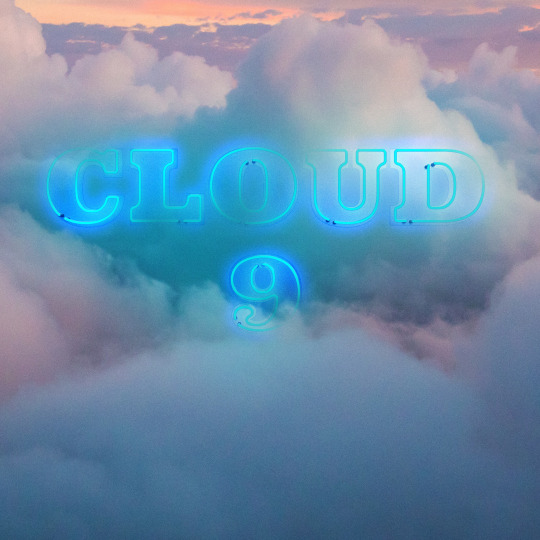



In the Spring of 2023, my bowling team changed our name from the assigned team name of Team 9 to Cloud 9. We needed a new logo to represent us on the dashboard where we input our scores during league play. I created a few different looks from vector to rendered out cloud VDB passes in Octane and Redshift and then comped them in Photoshop. The team selected the image with the diamond hatch faded background with the blue bar above the number 9.
48 notes
·
View notes
Photo

2023 July 5
A Map of the Observable Universe
Image Credit & Copyright: B. Ménard & N. Shtarkman; Data: SDSS, Planck, JHU, Sloan, NASA, ESA
Explanation: What if you could see out to the edge of the observable universe? You would see galaxies, galaxies, galaxies, and then, well, quasars, which are the bright centers of distant galaxies. To expand understanding of the very largest scales that humanity can see, a map of the galaxies and quasars found by the Sloan Digital Sky Survey from 2000 to 2020 -- out to near the edge of the observable universe -- has been composed. Featured here, one wedge from this survey encompasses about 200,000 galaxies and quasars out beyond a look-back time of 12 billion years and cosmological redshift 5. Almost every dot in the nearby lower part of the illustration represents a galaxy, with redness indicating increasing redshift and distance. Similarly, almost every dot on the upper part represents a distant quasar, with blue-shaded dots being closer than red. Clearly shown among many discoveries, gravity between galaxies has caused the nearby universe to condense and become increasingly more filamentary than the distant universe.
∞ Source: apod.nasa.gov/apod/ap230705.html
127 notes
·
View notes
Text
Izzy Hands Fic Recs (Dec 2023-Jan 2024)
My favorite of the Izzy fics that I read between Dec 2023 - Jan 2024. See other recs here.
drink you in by wrizard (Stede/Izzy)
Stede's obviously had a rough day. Before he can do something stupid (like, for example, pick a fight with a Pirate Queen), Izzy tries his most reliable technique for defusing tense situations: a quick, easy hookup out back. It goes better than planned.
Take no prisoners by pampermouse (Stede/Izzy)
Israel Hands, a respectable member of the Royal Navy, is gently trafficked into piracy by one Captain Stede Bonnet.
Old Friends and Ongoing Discipline by LaceratedLullabies (Stede/Izzy, Calico Jack/Izzy)
The pressures of being captain are beginning to weigh on Stede. Izzy pushes him to embrace the role, and the power and authority that it brings. Several months later, the Revenge docks at the rebuilding Republic of Pirates. Jack runs into Izzy in a bar, finding him missing a leg and with Edward nowhere in sight. Naturally he has some concerns, but after spending the evening with Izzy, he learns that far more has changed than he'd realised.
Open Water by Aletea (Izzy/Frenchie)
... Why can't he stop Izzy Hands from dying?
Chef's Best by Hideous_Sun_Demon
Roach takes pride in his cooking, and if anybody turns their nose up at it - well, that's a personal attack. So, when Izzy refuses to eat any of his food, he's determined to get to the bottom of it.
in a house by the sea by redshift
Fang casts a glance at Izzy and looks back to the blue-gray island rising to meet them. "Do you want to see him?"...
#kaelleid post#izzy hands#fic rec#ofmd#ofmd izzy#israel hands#stizzy#haven't read much ofmd these past few months#likely wont be posting recs on a monthly basis anymore#obviously
26 notes
·
View notes
Photo

Abell 3827: Cannibal Cluster Gravitational Lens : Is that one galaxy or three? Toward the right of the featured Hubble image of the massive galaxy cluster Abell 3827 is what appears to be a most unusual galaxy -- curved and with three centers. A detailed analysis, however, finds that these are three images of the same background galaxy -- and that there are at least four more images. Light we see from the single background blue galaxy takes multiple paths through the complex gravity of the cluster, just like a single distant light can take multiple paths through the stem of a wine glass. Studying how clusters like Abell 3827 and their component galaxies deflect distant light gives information about how mass and dark matter are distributed. Abell 3827 is so distant, having a redshift of 0.1, that the light we see from it left about 1.3 billion years ago -- before dinosaurs roamed the Earth. Therefore, the cluster's central galaxies have now surely all coalesced -- in a feast of galactic cannibalism -- into one huge galaxy near the cluster's center. via NASA
578 notes
·
View notes
Video
Euclid’s view of the Horsehead Nebula by European Space Agency
Via Flickr:
Euclid shows us a spectacularly panoramic and detailed view of the Horsehead Nebula, also known as Barnard 33 and part of the constellation Orion. At approximately 1375 light-years away, the Horsehead – visible as a dark cloud shaped like a horse’s head – is the closest giant star-forming region to Earth. It sits just to the south of star Alnitak, the easternmost of Orion’s famous three-star belt, and is part of the vast Orion molecular cloud. Many other telescopes have taken images of the Horsehead Nebula, but none of them are able to create such a sharp and wide view as Euclid can with just one observation. Euclid captured this image of the Horsehead in about one hour, which showcases the mission's ability to very quickly image an unprecedented area of the sky in high detail. In Euclid’s new observation of this stellar nursery, scientists hope to find many dim and previously unseen Jupiter-mass planets in their celestial infancy, as well as young brown dwarfs and baby stars. “We are particularly interested in this region, because star formation is taking place in very special conditions,” explains Eduardo Martin Guerrero de Escalante of the Instituto de Astrofisica de Canarias in Tenerife and a legacy scientist for Euclid. These special conditions are caused by radiation coming from the very bright star Sigma Orionis, which is located above the Horsehead, just outside Euclid’s field-of-view (the star is so bright that the telescope would see nothing else if it pointed directly towards it). Ultraviolet radiation from Sigma Orionis causes the clouds behind the Horsehead to glow, while the thick clouds of the Horsehead itself block light from directly behind it; this makes the head look dark. The nebula itself is made up largely of cold molecular hydrogen, which gives off very little heat and no light. Astronomers study the differences in the conditions for star formation between the dark and bright clouds. The star Sigma Orionis itself belongs to a group of more than a hundred stars, called an open cluster. However, astronomers don’t have the full picture of all the stars belonging to the cluster. “Gaia has revealed many new members, but we already see new candidate stars, brown dwarfs and planetary-mass objects in this Euclid image, so we hope that Euclid will give us a more complete picture,” adds Eduardo. The data in this image were taken in about one hour of observation. This colour image was obtained by combining VIS data and NISP photometry in Y and H bands; its size is 8800 x 8800 pixels. VIS and NISP enable observing astronomical sources in four different wavelength ranges. Aesthetics choices led to the selection of three out of these four bands to be cast onto the traditional Red-Green-Blue colour channels used to represent images on our digital screens (RGB). The blue, green, red channels capture the Universe seen by Euclid around the wavelength 0.7, 1.1, and 1.7 micron respectively. This gives Euclid a distinctive colour palette: hot stars have a white-blue hue, excited hydrogen gas appears in the blue channel, and regions rich in dust and molecular gas have a clear red hue. Distant redshifted background galaxies appear very red. In the image, the stars have six prominent spikes due to how light interacts with the optical system of the telescope in the process of diffraction. Another signature of Euclid special optics is the presence of a few, very faint and small round regions of a fuzzy blue colour. These are normal artefacts of complex optical systems, so-called ‘optical ghost’; easily identifiable during data analysis, they do not cause any problem for the science goals. The cutout from the full view of the Horsehead Nebula is at the high resolution of the VIS instrument. This is nine times better than the definition of NISP that was selected for the full view; this was done for the practical reason of limiting the format of the full image to a manageable size for downloading. The cutout fully showcases the power of Euclid in obtaining extremely sharp images over a large region of the sky in one single pointing. Although this image represents only a small part of the entire colour view, the same quality as shown here is available over the full field. The full view of the Horsehead Nebula at the highest definition can be explored on ESASky. [Image description] This square astronomical image is divided horizontally by a waving line between a white-orange cloudscape forming a nebula along the bottom portion and a comparatively blue-purple-pink upper portion. From the nebula in the bottom half of the image, an orange cloud shaped like a horsehead sticks out. In the bottom left of the image, a white round glow is visible. The clouds from the bottom half of the image shine purple/blue light into the upper half. The top of the image shows the black expanse of space. Speckled across both portions is a starfield, showing stars of varying sizes and colours. Blue stars are younger and red stars are older. Credits: ESA/Euclid/Euclid Consortium/NASA, image processing by J.-C. Cuillandre (CEA Paris-Saclay), G. Anselmi; CC BY-SA 3.0 IGO
#ESA#European Space Agency#Space#Universe#Cosmos#Space Science#Science#Space Technology#Tech#Technology#Dark Matter#Dark Energy#Dark Universe#Euclid#Euclid Mission#Stars#Horsehead Nebula#Nebula#Barnard 33#Orion#Alnitak#Stellar nursery#InfraRed#IR#flickr
37 notes
·
View notes
Text

Clusters of galaxies
As seen by the eROSITA All-Sky Survey with red dots indicating redshift 1 objects and blue dots indicating redshift 3 objects.
Image credit: MPE, J. Sanders for the eROSITA consortium
#art#cosmos#cosmic#universe#blast#space#wallpaper#photography#galaxies#galaxy#clusters#eROSITA#MPE#J.sanders#lumpiness
14 notes
·
View notes
Note
Helloo!! For the ask game, how about The Lost, the Star(s), and/or The Righteous? 👀👀
Oh yay I can introduce a few OCs I haven't shown you guys before :3c
The Lost!

[ID from ALT: A portrait of my OC, who has no name currently. He is wearing stylized grey and black monochrome layers with white fastenings, and a black mask with a cat's smile. Coming from behind him is a shadowy creature with the face of a cat. His hair covers one of his eyes, and he is looking down with a morose expression. Above him is the title 'The Lost'. End ID]
This kid is! Part of a set of twins. I bought his initial design (which I have since tweaked) on DevArt as an adoptable back in the early days, and he was sold alongside his twin- who was bought by someone I've never talked to. lol.
So! As far as his lore is concerned! He knows he's one of a set of twins. He knows he isn't alone- but his twin doesn't exist in this universe. No birth records, no one other than him has any memory of them. Even Data would be unable to confirm if his twin actually existed at any point in time. So he's not lost, but his twin is :3c The cat is a creature who consumes loneliness that he lets stick around. I need to name him.... I love his design...
The Star!

[ID from ALT: A portrait of my OC, Amelie. She has dark blue-purple hair, a pastel purple flower in her hair, ans a layered purple blouse. She looks offscreen with faint, sleepy surprise. Next to her is the title 'The Star'. End ID]
This is Amelie! She is! An astrological devil! Actually, she happens to be the very first one! And possibly the very first intelligent lifeform in my universe, as she was born alongside my universe's equivalent of the Big Bang!! She will exist as long as CMB hasn't completely redshifted into obscurity. She spends most of her time in a coma, with one of the other original AD (a redshifted galaxy) keeping an eye on her as her 'Gravekeeper'. Sometimes she 'wakes up' if the ADs are facing something that threatens their (and thus, the universe's) existence. Eepy and powerful little lady.
#Amelie#Ocs#Mara's Art#:3#amelie's gravekeeper is fun. he stays on top of everything and knows a lot bc he needs to have the context amelie needs when she awakens#amelie in contrast is really pure and somewhat simpleminded so her gravekeeper = guard dog
10 notes
·
View notes
Text
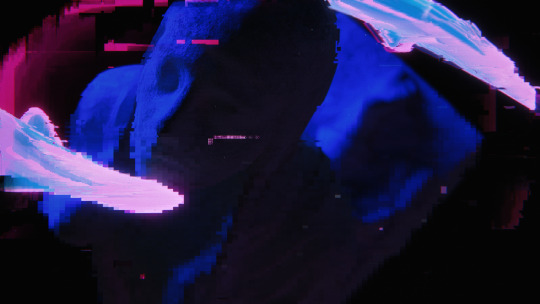
Styleframe for a new upcoming project
#styleframe#c4d#design#motiondesign#digitalart#art#glitch#statue#3d#cgi#vfx#fish#hologram#gits#dark#blue#graphicdesign#redshift#maxon#nft#digital#artist#graphicartist#adobe#aftereffects#wip#freelancer#retro#synthwave
0 notes
Text
James Webb Telescope Uncovers Carbon-Rich Dust Grains in the Early Universe. Read full article here

This image showcases the galaxy JADES-GS-z6, a research target in the deep galaxy field of GOODS-South, observed as part of the JWST Advanced Deep Extragalactic Survey (JADES). The galaxy's hazy appearance in blue, red, and green indicates the data captured by Webb's NIRCam at various near-infrared wavelengths. This finding by an international team of astronomers reveals the chemical signature of carbon-rich dust grains at redshift ~7, approximately one billion years after the Universe's birth, offering exciting insights into the early Universe's cosmic dust production and earliest stellar populations. Credits: ESA/Webb, NASA, ESA, CSA, B. Robertson (UC Santa Cruz), B. Johnson (Center for Astrophysics, Harvard & Smithsonian), S. Tacchella (University of Cambridge, M. Rieke (Univ. of Arizona), D. Eisenstein (Center for Astrophysics, Harvard & Smithsonian), A. Pagan (STScI). Read full article here
12 notes
·
View notes
Note
You're definitely more red than blue
It's called redshift and it means that my gravitational waves are fucking voluptuous
14 notes
·
View notes
Text

What if you could see out to the edge of the observable universe? You would see galaxies, galaxies, galaxies, and then, well, quasars, which are the bright centers of distant galaxies. To expand understanding of the very largest scales that humanity can see, a map of the galaxies and quasars found by the Sloan Digital Sky Survey from 2000 to 2020 -- out to near the edge of the observable universe -- has been composed. Featured here, one wedge from this survey encompasses about 200,000 galaxies and quasars out beyond a look-back time of 12 billion years and cosmological redshift 5. Almost every dot in the nearby lower part of the illustration represents a galaxy, with redness indicating increasing redshift and distance. Similarly, almost every dot on the upper part represents a distant quasar, with blue-shaded dots being closer than red. Clearly shown among many discoveries, gravity between galaxies has caused the nearby universe to condense and become increasingly more filamentary than the distant universe.
11 notes
·
View notes
Text
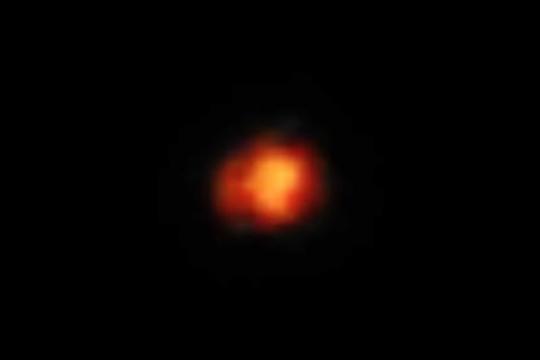
Maisie’s galaxy is among earliest ever observed
Thanks to the James Webb Space Telescope, astronomers racing to find some of the earliest galaxies ever glimpsed have now confirmed that a galaxy first detected last summer is in fact among the earliest ever found. The findings are in the journal Nature.
Follow-up observations since first detection of Maisie’s galaxy have revealed that it is from 390 million years after the Big Bang. Although that’s not quite as early as the team led by University of Texas at Austin astronomer Steven Finkelstein first estimated last summer, it is nonetheless one of the four earliest confirmed galaxies observed.
“The exciting thing about Maisie’s galaxy is that it was one of the first distant galaxies identified by JWST, and of that set, it’s the first to actually be spectroscopically confirmed,” said Finkelstein, a professor of astronomy at UT Austin, an author of the Nature paper and the principal investigator for the Cosmic Evolution Early Release Science Survey (CEERS). He named the galaxy after his daughter as it was discovered on her birthday.
Watch a video simulating a flight from Earth to Maisie’s galaxy
The latest analysis was led by first author Pablo Arrabal Haro, a postdoctoral research associate at the National Science Foundation’s National Optical-Infrared Astronomy Research Laboratory. Besides Finkelstein, co-authors from UT Austin are Caitlin Casey, Micaela Bagley, Katherine Chworowsky and Seiji Fujimoto.
The CEERS team is currently evaluating about 10 other galaxies that might be from an era even earlier than Maisie’s.
Objects in space don’t come printed with a time stamp. To infer when the light we observe left an object, astronomers measure its redshift, the amount that its color has been shifted due to its motion away from us. Because we live in an expanding universe, the farther back in time we look, the higher an object’s redshift.
The original estimates of redshifts (and hence times after the Big Bang) were based on photometry, the brightness of light in images using a small number of wide frequency filters. Those estimates were made using data collected by CEERS during its originally allotted time for the telescope’s first observing season. To get a more accurate estimate, the CEERS team applied for follow-up measurements with JWST’s spectroscopic instrument, NIRSpec, which splits an object’s light into many different narrow frequencies to more accurately identify its chemical makeup, heat output, intrinsic brightness and relative motion. According to this latest spectroscopic analysis, Maisie’s galaxy is at a redshift of z=11.4.
This study also looked at CEERS-93316, a galaxy originally found in publicly available CEERS data by a University of Edinburgh-led team and was initially estimated to have been observed at a jaw-dropping 250 million years after the Big Bang. On further analysis, the team found that CEERS-93316 has a more modest redshift of z=4.9, which corresponds to about 1 billion years after the Big Bang.
It turns out that hot gas in CEERS-93316 was emitting so much light in a few narrow frequency bands associated with oxygen and hydrogen that it made the galaxy appear much bluer than it really was. That blue cast mimicked the signature Finkelstein and others expected to see in very early galaxies. This is due to a quirk of the photometric method that happens only for objects with redshifts of about 4.9. Finkelstein says this was a case of bad luck.
“This was a kind of weird case,” Finkelstein said. “Of the many tens of high redshift candidates that have been observed spectroscopically, this is the only instance of the true redshift being much less than our initial guess.”
Not only does this galaxy appear unnaturally blue, it also is much brighter than our current models predict for galaxies that formed so early in the universe.
“It would have been really challenging to explain how the universe could create such a massive galaxy so soon,” Finkelstein said. “So, I think this was probably always the most likely outcome, because it was so extreme, so bright, at such an apparent high redshift.”
This research was supported by NASA, the Space Telescope Science Institute, the Spanish Ministry of Science and Innovation, the Leverhulme Trust, the Science and Technology Facilities Council, UK Research and Innovation, and the Agencia Nacional de Investigación y Desarrollo.
IMAGE....Spectroscopic observations reveal that Maisie’s galaxy, named after Steven Finkelstein’s daughter, was detected 390 million years after the Big Bang. That makes it one of the four earliest confirmed galaxies ever observed. CREDIT NASA/STScI/CEERS/TACC/ University of Texas at Austin/S. Finkelstein/M. Bagley
#science#space#astronomy#physics#news#astrophysics#nasa#esa#james webb space telescope#GALACTIC EVOLUTION
8 notes
·
View notes